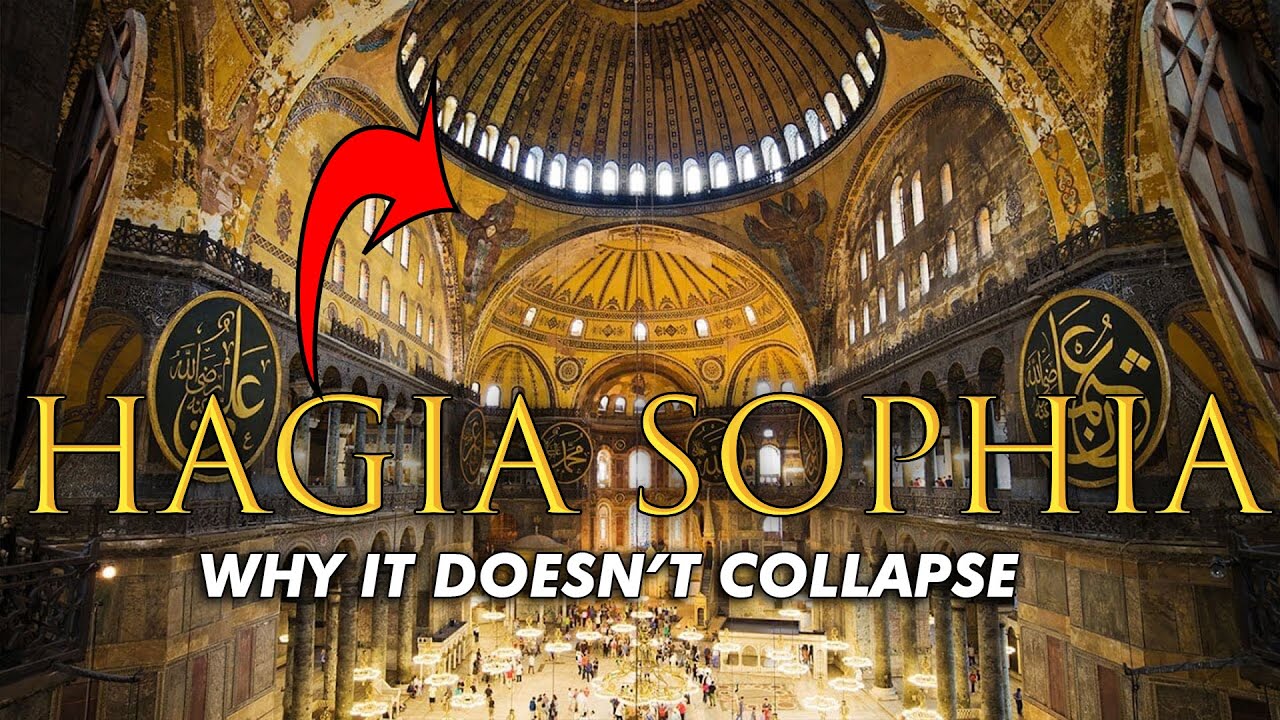Hagia Sophia is a former Christian patriarchal basilica, later an imperial mosque, and now a museum in Istanbul, Turkey. Built in 537 AD at the beginning of the Middle Ages, it was famous in particular for its massive dome. It was the largest cathedral in the world for nearly a thousand years, until the completion of the Seville Cathedral in 1520.
Hagia Sophia is widely considered the epitome of Byzantine architecture and is said to have “changed the history of architecture”. It is considered the epitome of Byzantine architecture and is said to have “changed the history of architecture.” Its interior is decorated with mosaics and marble pillars and coverings of great artistic value.
History
The building was originally constructed as a Christian basilica in the 6th century during the reign of Emperor Justinian I. It was designed by two architects, Anthemius of Tralles and Isidore of Miletus. The Hagia Sophia served as the Greek Patriarchal cathedral of Constantinople and the seat of the Ecumenical Patriarchate until the year 1453, when it was converted into a mosque. It was then converted into a museum in 1935 by the Republic of Turkey.
Architecture
Hagia Sophia is one of the most important architectural monuments in the world. It has a basilica plan, with a central nave and four side aisles. The nave is surmounted by a large dome, with a diameter of 31.88 m (104 ft 8 in) and a height of 56 m (183 ft 6 in). The structure is built of brick and mortar joints, and reinforced with steel. The building is crowned by a large central dome, flanked by four semi-domes.
Dome
The dome of Hagia Sophia is considered to be one of the great architectural achievements of all time. It is a double shell, with an inner and an outer dome, and is the largest dome of its kind in the world. The inner dome is carried on four arches, which are supported by four massive piers. The outer dome is carried on eight arches, which are supported by eight massive piers. The dome is decorated with Byzantine mosaics.
Interior
The interior of Hagia Sophia is decorated with mosaics and marble pillars and coverings of great artistic value. The mosaics are mostly from the Byzantine period and depict religious scenes. The marble decorations are mostly from the Ottoman period, and they depict geometric and floral designs. The interior also features a large number of columns and arches, which are decorated with elaborate carvings and designs.
Conclusion
Hagia Sophia is a remarkable example of Byzantine architecture and is one of the most important architectural monuments in the world. Its massive dome and elaborate interior decorations make it a must-see destination for any traveler. Hagia Sophia is a testament to the creativity and skill of the architects and artisans of the time, and it is a symbol of the city of Istanbul.
- History: Built in 537 AD, Hagia Sophia was originally constructed as a Christian basilica. It served as the Greek Patriarchal cathedral of Constantinople and the seat of the Ecumenical Patriarchate until the year 1453, when it was converted into a mosque.
- Architecture: Hagia Sophia has a basilica plan, with a central nave and four side aisles. It is crowned by a large central dome, flanked by four semi-domes.
- Interior: The interior of Hagia Sophia is decorated with mosaics and marble pillars and coverings of great artistic value.
- Conclusion: Hagia Sophia is a remarkable example of Byzantine architecture and is one of the most important architectural monuments in the world. It is a symbol of the city of Istanbul.




